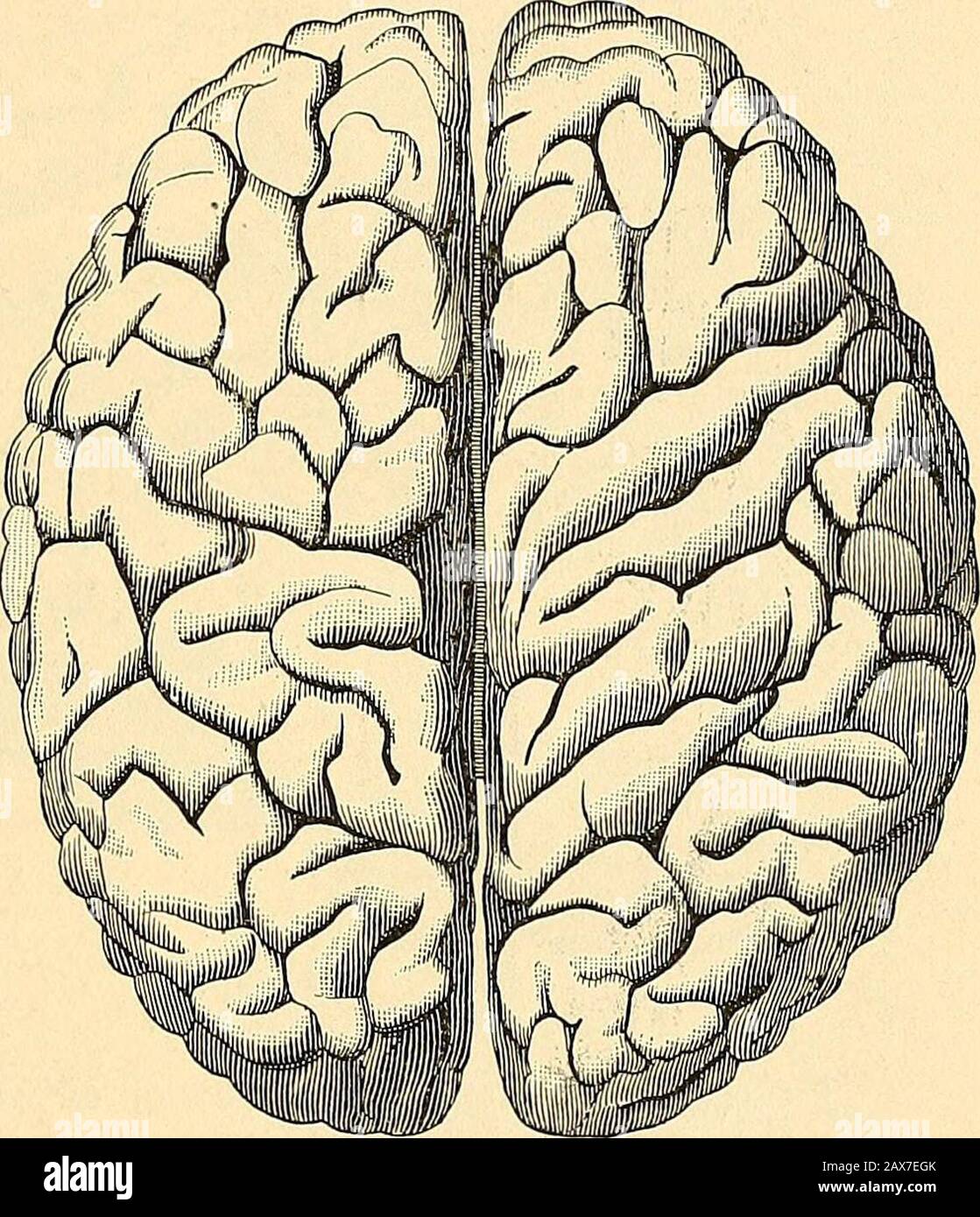An introductory psychology, with some educational applications . rs from the spinal cord pass through the medullaon the way to the higher ranges of the brain. The cellbodies of the medulla control a number of reflex acts.There is a considerable crossing over of the fibers in themedulla as mentioned above, on the part of both sensoryand motor tracts. The medulla is only about an inch and aquarter long andis shaped some-what like an in-verted truncatedcone, with deepfissures along itssides. Next abovethe medulla is thepons, a bridge offibers, as it were,between the me-dulla and thehigher regions

Image details
Contributor:
The Reading Room / Alamy Stock PhotoImage ID:
2AX7EGKFile size:
7.1 MB (540.8 KB Compressed download)Releases:
Model - no | Property - noDo I need a release?Dimensions:
1467 x 1703 px | 24.8 x 28.8 cm | 9.8 x 11.4 inches | 150dpiMore information:
This image is a public domain image, which means either that copyright has expired in the image or the copyright holder has waived their copyright. Alamy charges you a fee for access to the high resolution copy of the image.
This image could have imperfections as it’s either historical or reportage.
An introductory psychology, with some educational applications . rs from the spinal cord pass through the medullaon the way to the higher ranges of the brain. The cellbodies of the medulla control a number of reflex acts.There is a considerable crossing over of the fibers in themedulla as mentioned above, on the part of both sensoryand motor tracts. The medulla is only about an inch and aquarter long andis shaped some-what like an in-verted truncatedcone, with deepfissures along itssides. Next abovethe medulla is thepons, a bridge offibers, as it were, between the me-dulla and thehigher regions ofthe brain. Manyof the cranialnerves come outof the medullaand the pons.Back of the ponsis the cerebellum.Its connectionswith the brain and spinal cord are also through the pons.The function of the cerebellum is not well known, althoughit has been shown that it has much to do with making ouractions smooth and accurate rather than rough and awkward.For the student of the mind the large cerebral hemi-spheres filling almost the whole of the skull cavity are the. Fig. 4. The human brain viewed from above. Tlie cerebral hemispheres completely cover the rest of the brain 42 AN mTRODUCTORY PSYCHOLOGY important part of the brain. The cerebrum consists of thetwo large hemispheres, right and left, which are connectedby white fibrous tissues called the corpus callosum. Thehemispheres are divided into lobes, the frontal lobes in thefront part of the skull cavity, the temporal lobes abovethe ears, the parietal lobes about the crown of the head.